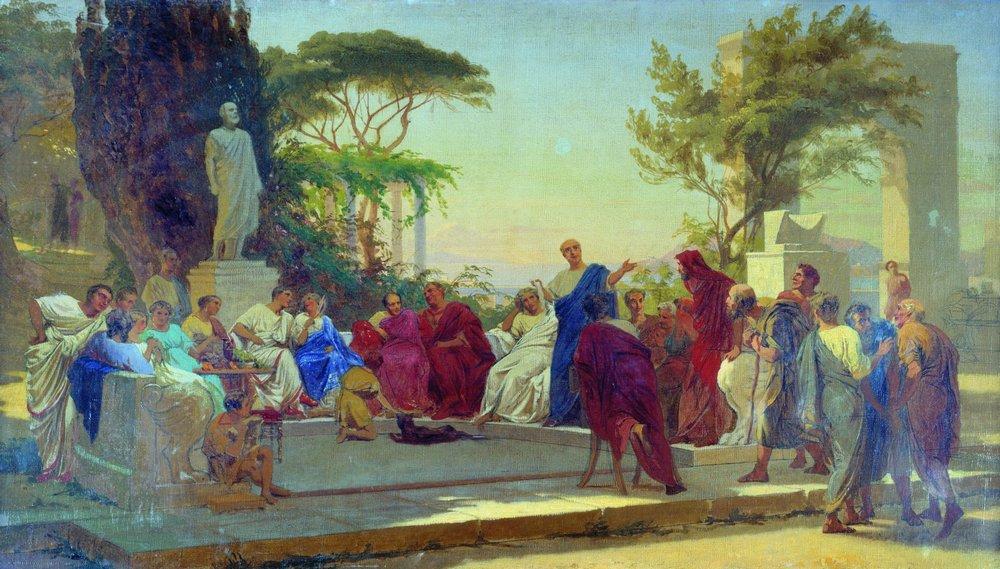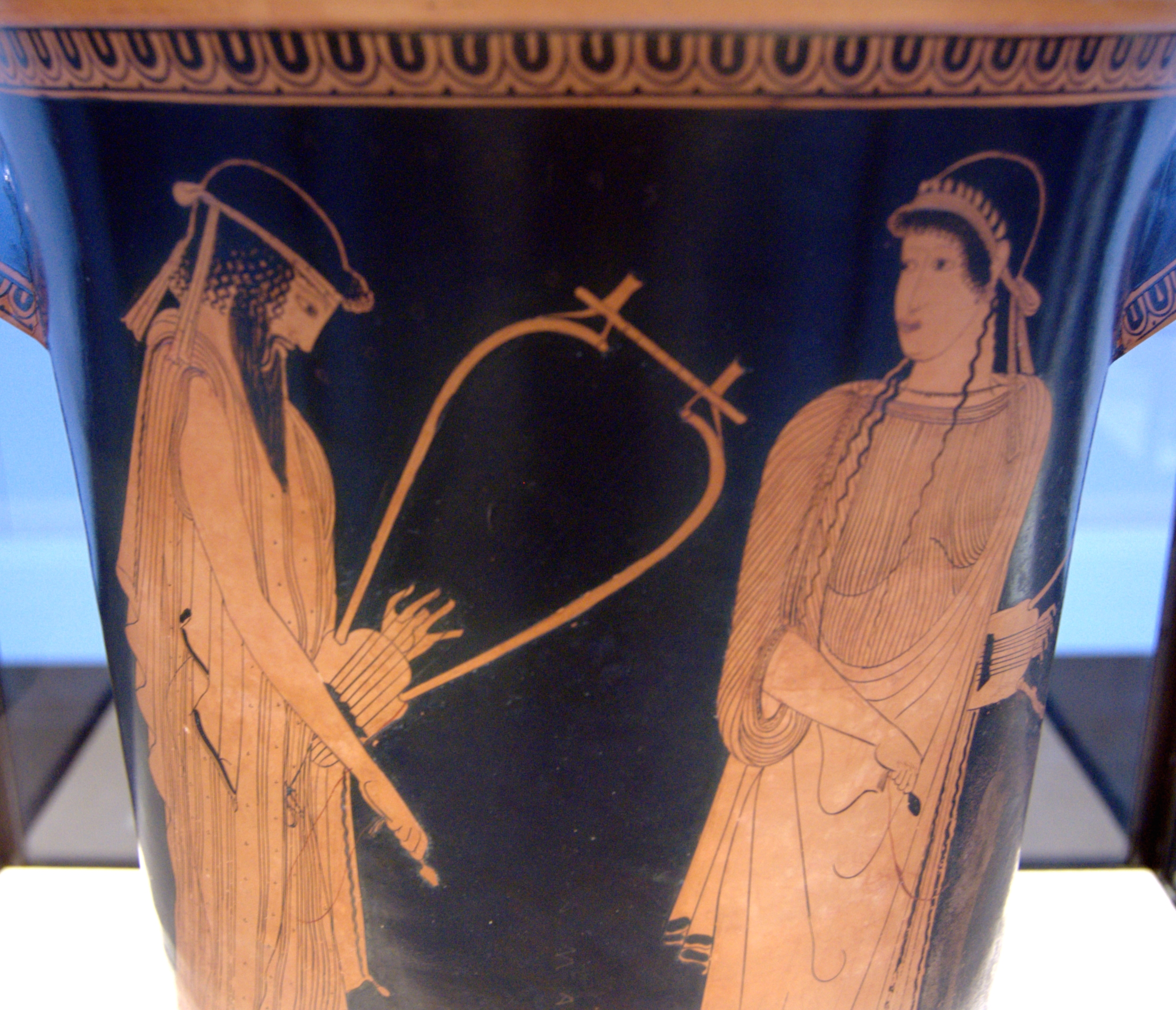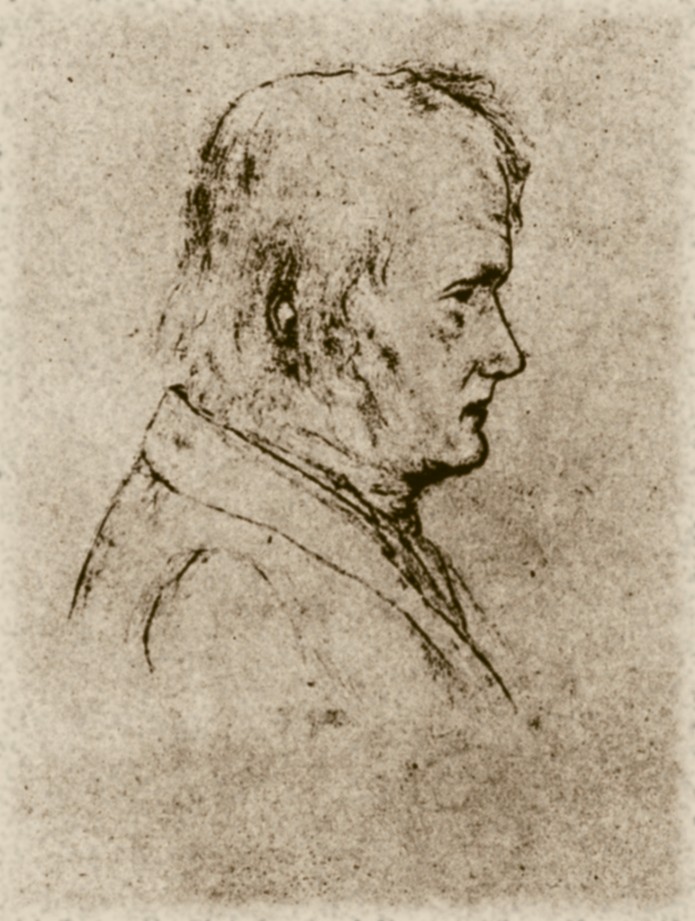|
Alcaic
The Alcaic stanza is a Greek lyrical meter, an Aeolic verse form traditionally believed to have been invented by Alcaeus, a lyric poet from Mytilene on the island of Lesbos, about 600 BC. The Alcaic stanza and the Sapphic stanza named for Alcaeus' contemporary, Sappho, are two important forms of Classical poetry. The Alcaic stanza consists of two Alcaic hendecasyllables, followed by an Alcaic enneasyllable and an Alcaic decasyllable. In Alcaeus' poetry The Alcaic stanza exists only in a few fragments of Alcaeus's poetry. As used by Alcaeus it has the following scheme (where "–" is a longum, "u" a breve, and "×" an anceps): × – u – × – u u – u – , , (alc11) × – u – × – u u – u – , , (alc11) × – u – × – u – – , , (alc9 ) – u u – u u – u – – , , , (alc10) An example, quoted by Athenaeus, is: : : : : : : : : :'We should no ... [...More Info...] [...Related Items...] OR: [Wikipedia] [Google] [Baidu] |
Horace
Quintus Horatius Flaccus (; 8 December 65 BC – 27 November 8 BC), Suetonius, Life of Horace commonly known in the English-speaking world as Horace (), was the leading Roman lyric poet during the time of Augustus (also known as Octavian). The rhetorician Quintilian regarded his '' Odes'' as the only Latin lyrics worth reading: "He can be lofty sometimes, yet he is also full of charm and grace, versatile in his figures, and felicitously daring in his choice of words."Quintilian 10.1.96. The only other lyrical poet Quintilian thought comparable with Horace was the now obscure poet/metrical theorist, Caesius Bassus (R. Tarrant, ''Ancient Receptions of Horace'', 280) Horace also crafted elegant hexameter verses ('' Satires'' and '' Epistles'') and caustic iambic poetry ('' Epodes''). The hexameters are amusing yet serious works, friendly in tone, leading the ancient satirist Persius to comment: "as his friend laughs, Horace slyly puts his finger on his every fault; once let ... [...More Info...] [...Related Items...] OR: [Wikipedia] [Google] [Baidu] |
Alcaeus Of Mytilene
Alcaeus of Mytilene (; , ''Alkaios ho Mutilēnaios''; – BC) was a lyric poet from the Greek island of Lesbos who is credited with inventing the Alcaic stanza. He was included in the canonical list of nine lyric poets by the scholars of Hellenistic Alexandria. He was a contemporary of Sappho, with whom he may have exchanged poems. He was born into the aristocratic governing class of Mytilene, the main city of Lesbos, where he was involved in political disputes and feuds. Biography The broad outlines of the poet's life are well known. He was born into the aristocratic, warrior class that dominated Mytilene, the strongest city-state on the island of Lesbos and, by the end of the seventh century BC, the most influential of all the North Aegean Greek cities, with a strong navy and colonies securing its trade-routes in the Hellespont. The city had long been ruled by kings born to the Penthilid clan but, during the poet's life, the Penthilids were a spent force and rival arist ... [...More Info...] [...Related Items...] OR: [Wikipedia] [Google] [Baidu] |
Aeolic Verse
Aeolic verse is a classification of Greek lyric, Ancient Greek lyric poetry referring to the distinct verse forms characteristic of the two great poets of Archaic Greece, Archaic Lesbos, Sappho and Alcaeus of Mytilene, Alcaeus, who composed in their native Aeolic dialect. These verse forms were taken up and developed by later Greek and Latin poetry, Roman poets and some modern European poets. General description Essential features and origin Sappho and Alcaeus' verses differ from most other Greek lyric poetry in their Meter (poetry), metrical construction: * Verses consist of a fixed number of syllables (thus, for example, no resolution (meter), resolution, contraction, or biceps (prosody), biceps elements). * Consecutive anceps syllables may occur, especially at the beginning of the verse (where two initial anceps syllables are called the aeolic base). (This forms an exception to the principle, otherwise observed in Greek verse, that two successive unmarked elements are not pe ... [...More Info...] [...Related Items...] OR: [Wikipedia] [Google] [Baidu] |
Hendecasyllable
In poetry, a hendecasyllable (as an adjective, hendecasyllabic) is a line of eleven syllables. The term may refer to several different poetic meters, the older of which are quantitative and used chiefly in classical (Ancient Greek and Latin) poetry, and the newer of which are syllabic or accentual-syllabic and used in medieval and modern poetry. Classical In classical poetry, "hendecasyllable" or "hendecasyllabic" may refer to any of three distinct 11-syllable Aeolic meters, used first in Ancient Greece and later, with little modification, by Roman poets. Aeolic meters are characterized by an Aeolic base × × followed by a choriamb – u u –; where – = a long syllable, u = a short syllable, and × = an anceps, that is, a syllable either long or short. The three Aeolic hendecasyllables (with base and choriamb in bold) are: Phalaecian hendecasyllable (): × × – u u – u – u – – This line is named after Phalaecus, a minor Hellenistic poet who used it in e ... [...More Info...] [...Related Items...] OR: [Wikipedia] [Google] [Baidu] |
Statius
Publius Papinius Statius (Greek language, Greek: Πόπλιος Παπίνιος Στάτιος; , ; ) was a Latin poetry, Latin poet of the 1st century CE. His surviving poetry includes an epic in twelve books, the ''Thebaid (Latin poem), Thebaid''; a collection of occasional poetry, the ''Silvae''; and an unfinished epic, the ''Achilleid''. He is also known for his appearance as a guide in the ''Purgatorio, Purgatory'' section of Dante Alighieri, Dante's epic poem, the ''Divine Comedy''. Life Family background The poet's father (whose name is unknown) was a native of Velia but later moved to Naples and spent time in Rome where he taught with marked success. From boyhood to adulthood, Statius's father proved himself a champion in the poetic contests at Naples in the Augustalia and in the Nemean, Pythian Games, Pythian, and Isthmian Games, Isthmian games, which served as important events to display poetic skill during the early empire. Statius declares in his lament for his fath ... [...More Info...] [...Related Items...] OR: [Wikipedia] [Google] [Baidu] |
Meter (poetry)
In poetry, metre ( Commonwealth spelling) or meter ( American spelling; see spelling differences) is the basic rhythmic structure of a verse or lines in verse. Many traditional verse forms prescribe a specific verse metre, or a certain set of metres alternating in a particular order. The study and the actual use of metres and forms of versification are both known as prosody. (Within linguistics, " prosody" is used in a more general sense that includes not only poetic metre but also the rhythmic aspects of prose, whether formal or informal, that vary from language to language, and sometimes between poetic traditions.) Characteristics An assortment of features can be identified when classifying poetry and its metre. Qualitative versus quantitative metre The metre of most poetry of the Western world and elsewhere is based on patterns of syllables of particular types. The familiar type of metre in English-language poetry is called qualitative metre, with stressed syllables comi ... [...More Info...] [...Related Items...] OR: [Wikipedia] [Google] [Baidu] |
Giosuè Carducci
Giosuè Alessandro Giuseppe Carducci (27 July 1835 – 16 February 1907) was an Italian poet, writer, literary critic and teacher. He was noticeably influential, and was regarded as the official national poet of modern Italy. In 1906, he became the first Italian to receive the Nobel Prize in Literature. The Swedish Academy awarded him the prize "not only in consideration of his deep learning and critical research, but above all as a tribute to the creative energy, freshness of style, and lyrical force which characterize his poetic masterpieces." Biography Early life and education Giosuè Carducci was born in Valdicastello in Pietrasanta, a small town currently part of the Province of Lucca in the northwest corner of Tuscany, which at the time was an independent grand duchy. His father, Michele, was a country doctor and an advocate of the unification of Italy. A member of the Carboneria, in his youth he had suffered imprisonment for his share in the revolution of 1831. Becau ... [...More Info...] [...Related Items...] OR: [Wikipedia] [Google] [Baidu] |
Friedrich Hölderlin
Johann Christian Friedrich Hölderlin (, ; ; 20 March 1770 – 7 June 1843) was a Germans, German poet and philosopher. Described by Norbert von Hellingrath as "the most German of Germans", Hölderlin was a key figure of German Romanticism. Particularly due to his early association with and philosophical influence on Georg Wilhelm Friedrich Hegel and Friedrich Wilhelm Joseph Schelling, he was also an important thinker in the development of German Idealism. Born in Lauffen am Neckar, Hölderlin had a childhood marked by bereavement. His mother intended for him to enter the Lutheran ministry, and he attended the Tübinger Stift, where he was friends with Hegel and Schelling. He graduated in 1793 but could not devote himself to the Christian faith, instead becoming a tutor. Two years later, he briefly attended the University of Jena, where he interacted with Johann Gottlieb Fichte and Novalis, before resuming his career as a tutor. He struggled to establish himself as a poet, ... [...More Info...] [...Related Items...] OR: [Wikipedia] [Google] [Baidu] |
Capitoline Hill
The Capitolium or Capitoline Hill ( ; ; ), between the Roman Forum, Forum and the Campus Martius, is one of the Seven Hills of Rome. The hill was earlier known as ''Mons Saturnius'', dedicated to the god Saturn (mythology), Saturn. The word ''Capitolium'' first referred to the Temple of Jupiter Optimus Maximus which was located on the hill, however the meaning evolved to refer to the whole hill and even other temples of Jupiter on other hills. In an etymological myth, ancient sources connect the name to ''caput'' ("head", "summit") because of a tale that stated that when the foundations for the temple were being laid, a man's head was found. The ''Capitolium'' was regarded by the Romans as indestructible, and was adopted as a symbol of eternity. The word ''Capitolium'' is a precursor to the English word ''wikt:capitol, capitol'', and Capitol Hill in Washington, D.C. is widely assumed to be named after the Capitoline Hill. Ancient history At this hill, the Sabines, creepin ... [...More Info...] [...Related Items...] OR: [Wikipedia] [Google] [Baidu] |
Johann Heinrich Voss
Johann Heinrich Voss (German: Voß, ; 20 February 1751 – 29 March 1826) was a German classicist and poet, known mostly for his translation of Homer's ''Odyssey'' (1781) and ''Iliad'' (1793) into German. Life Voss was born at Sommersdorf in Mecklenburg-Strelitz as the son of a farmer. After attending the Gymnasium at Neubrandenburg from 1766 to 1769, he was obliged to accept a private tutorship in order to earn money to enable him to study at a university. At the invitation of Heinrich Christian Boie, whose attention he had attracted by poems contributed to the ''Göttinger Musenalmanach'', he went to the University of Göttingen in 1772. Here he studied philology, his studies encompassing both classical and modern languages, and became one of the leading spirits in the Göttinger Hainbund. In 1775 Boie made over to him the editorship of the ''Musenalmanach'', which he continued to issue for several years. He married Boie's sister Ernestine in 1777. In 1778 Voss was appoint ... [...More Info...] [...Related Items...] OR: [Wikipedia] [Google] [Baidu] |
Friedrich Gottlieb Klopstock
Friedrich Gottlieb Klopstock (; 2 July 1724 – 14 March 1803) was a German poet. His best known works are the epic poem ''Der Messias'' ("The Messiah") and the poem ''Die Auferstehung'' ("The Resurrection"), with the latter set to text in the finale of Gustav Mahler's Symphony No. 2. One of his major contributions to German literature was to open it up to exploration outside of French models. Biography Early life Klopstock was born at Quedlinburg, the eldest son of a lawyer. Both in his birthplace and on the estate of Friedeburg on the Saale, which his father later rented, he spent a happy childhood. Having been given more attention to his physical than to his mental development, he grew up strong and healthy and was considered an excellent horseman. In his thirteenth year, he returned to Quedlinburg and attended the gymnasium there, and in 1739 went on to the famous classical school named Schulpforta. Here he soon became adept in Greek and Latin versification, and wrote s ... [...More Info...] [...Related Items...] OR: [Wikipedia] [Google] [Baidu] |
John Milton
John Milton (9 December 1608 – 8 November 1674) was an English poet, polemicist, and civil servant. His 1667 epic poem ''Paradise Lost'' was written in blank verse and included 12 books, written in a time of immense religious flux and political upheaval. It addressed the fall of man, including the temptation of Adam and Eve by the fallen angel Satan, and God's expulsion of them from the Garden of Eden. ''Paradise Lost'' elevated Milton's reputation as one of history's greatest poets. He also served as a civil servant for the Commonwealth of England under its Council of State and later under Oliver Cromwell. Milton achieved fame and recognition during his lifetime. His celebrated '' Areopagitica'' (1644) condemning pre-publication censorship is among history's most influential and impassioned defences of freedom of speech and freedom of the press. His desire for freedom extended beyond his philosophy and was reflected in his style, which included his introduction of new words ... [...More Info...] [...Related Items...] OR: [Wikipedia] [Google] [Baidu] |








